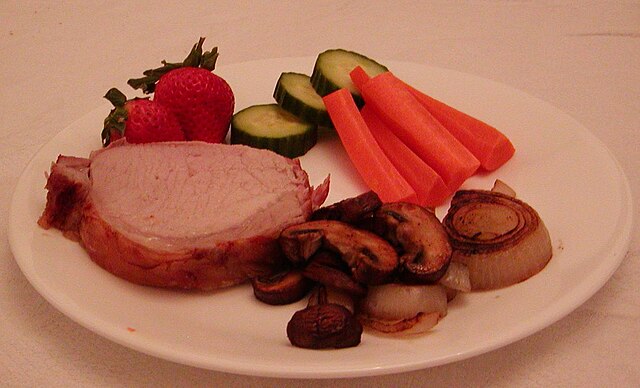The Philippines’ Department of Agriculture (DA) is mulling a maximum suggested retail price (msrp) for pork and onion sales to redeem value chain fairness.
According to the Secretary of Agriculture Francisco Tiu Laurel Jr., in a passing interview on November 6, 2025, both items currently enjoy overpricing.
Despite the government extending a 50,000-tonne onion import window to January 2026 to increase supplies, domestic prices are still up.
Laurel Jr. noted that local onion retail rates currently command 120-200 pesos (2.03-3.40) a kg while imported ones 90-160 pesos (1.52-2.71)/kg.
Hence, the DA is contemplating to not only bring up a maximum price cap for import onions but also for local equivalents.
The looming domestic onion msrp comes with a suggestion by the DA of 100 to 120 pesos ($1.69-2.03) a kg.
Liempo Overpriced
Onion sale imbalance however compare ill with the unfairness pervading the liempo (pork belly cuts) value chain. The cut incidentally was the only food that remained inflated in the keynote Iligan City in southeast PH, June 2025.
According to the DA, retail rates for liempo are unnaturally curving up to 400 pesos (6.77)/kg. This at a time when farm-gate prices for hogs are falling into the 150-180 pesos ($2.54-3.05) per live-weight kg.
To favor farmers, the agriculture department on November 4 raised the minimum live hog rate to 210 pesos ($3.55) a kg.
The DA is also assessing suggestions whether to restore pig import tariffs to 40%, above the current 25%.
The final step is ameliorating the retail price of pork cuts to a maximum 330 pesos ($5.58) a kg, for liempo.
If this msrp that the DA chief has mentioned comes up, it will be below the last srp of 380 pesos.
Around November 1, pork belly was retailing at 320 to 450 pesos ($5.41-7.61)/kg in the Manila metro, per the DA.
Onion and pork msrp are essential since these two spice and protein succor the palates of millions in the Philippines. To learn more how the official maximums for these two have fared historically, review the below stats.
Philippines Pork and Onion MRSP Statistics
A bulk of the population of the Philippines of 100.7 million people (2015 census) use onions as a spice or pork for regular diet. To protect this large consumer base, the government uses a suggested retail price (srp) and sometimes a maximum srp. Here is the Department of Agriculture (DA)’s price review for onions and pork cuts for the week ending November 1, 2025, versus the reigning srp:
| Produce/Cut | Weekly avg. Price [pesos/$ per kg] | srp |
| Liempo [pork belly] | 397.58 ($6.73) | 380 ($) [before November 1, 2025] |
| Kasim [pork ham] | 347.58 ($5.88) | 350 ($) [before November 1, 2025] |
| Frozen liempo | 313.55 ($5.31) | |
| Red onion [local] | 154.63 ($2.62) | 100 ($1.69) [suggested after November 4, 2025] |
| Red onion [imported] | 117.33 ($1.99) | |
| White onion [imported] | 120.71 ($2.04) |
Pork Case Study early November 2025
Liempo cuts last attracted an srp of 380 pesos ($6.43)/kg while kasim some 350 pesos ($6.00) a kg before November 1, 2025. However, retailers continued to sell liempo at up to 480 pesos ($8.12)/kg, despite farm gate rates for live hogs falling drastically. The government hence sought to introduce a maximum srp for liempo at 330 pesos ($5.58)/kg, as of November 4.
Onion Case Study 2023
Onions sometimes experience volatility, despite the government’s efforts to rein in prices. In end December 2022, for instance, onion retail rates soared to an unprecedented 600 pesos ($10.15) a kg.
Afterwards, in February 2023, the government set the srp for imported onions at 125 pesos ($2.12)/kg. In May 2023, the government then offered an import onion srp of 150 pesos ($2.54)/kg, which it then deferred. Stakeholders wanted white onions to have an srp of 140 pesos ($2.37)/kg while red onions some 150 pesos ($2.54)s/kg, per the ABS-CBN.
